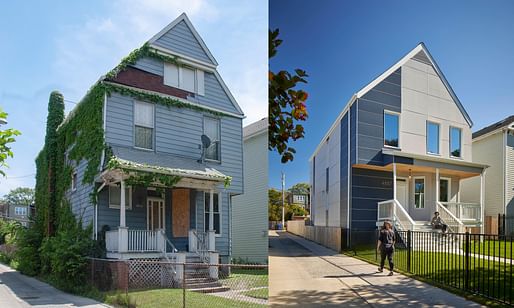
In a 2017 feature article for Archinect, NK Architects’ CMO Zack Semke set out the case for adopting Passive House design principles.
“The genius of Passive House design is that it recognizes the building itself – its skeleton and skin – as a technology,” Semke wrote. “Powered by modern building science, energy modeling, and an advanced analysis of the thermal properties of building structures, Passive House architecture sits squarely in the realm of information technology and science-based innovation. That is a potential game changer for buildings’ role in the clean energy transition.”
Five years later, the Passive House movement across the United States has surged, as architects seek to move their design proposals towards zero-carbon. The Passive House Institute of the Unites States (Phius), the body which oversees Passive Building standards in the U.S., has certified more than 7.4 million square feet of Passive Building projects to-date, as well as over 1,700 Passive Building consultants.
As our editorial has shown, this 7.4 million square feet of Passive Building space takes on many different forms. Last year, we reported on the construction of the world’s largest Passive Office building in Boston, while also highlighting a 19th century Passive House retrofit project in Chicago. Earlier this year, meanwhile, the state of Massachusetts announced two incentive programs to encourage apartment buildings to be designed and constructed to a Passive House standard.

While varied in scale, condition, and location, these projects are united by shared Passive Building principles: Thermal Control (through high-performance enclosures and thermal bridge elimination), Air Control (through airtightness and balanced ventilation), Radiation Control (through high performance glazing, shading, and daylighting), and Moisture Control (through material moisture control and air humidity).
To facilitate the design of certified Passive Building projects, employers are increasingly seeking the expertise of those with experience, or certification, in Passive Building principles. To demonstrate this, we are using our Job Highlights series this week to explore an open opportunity for a Passive House Construction Project Manager at Brooklyn-based CO Adaptive.

Now celebrating their tenth anniversary, CO Adaptive describes themselves as “passionate about retrofitting our existing building stock for energy efficiency and resiliency using the Passive House design methodology.” For the project manager position, the company hopes to find an individual who can “connect the dots” between their architecture team, site team, and clients, as well as source, sequence, and coordinate material procurement logistics.
“Throughout the design process, we are attentive to the functionality, durability, and embodied energy of materials to create buildings that minimize their carbon footprint and remain for decades to come,” the firm says. “We believe it is our responsibility as architects to understand the design of one building as part of a holistic system whose component parts have an effect on the environment they sit within, and there is a global cost to every decision made.”
Full details on CO Adaptive's latest job opportunity can be found here on Archinect Jobs. Stay tuned for future curated job highlights, and be sure to keep your eyes peeled for more exciting opportunities on Archinect's industry-leading job board. Recent editions of our Job Highlights series have seen career opportunities for an architect/design thinker at Terreform ONE, an airport terminal planner at Corgan, and a drawing drafter at WholeTree Structures.
1 Comment
Great to see this article on Archinect!
There is an important issue to point out, though - there are TWO certifying bodies for Passive House buildings in the US: the Passive House Institute (PHI) and the Passive House Institute US (PHIUS).
PHIUS broke away from PHI some years ago, and even though the basic strategies for both certifications are the same, the energy targets are slightly different.
PHI is generally represented by the Passive House Network in the US:
https://naphnetwork.org/
Block this user
Are you sure you want to block this user and hide all related comments throughout the site?
Archinect
This is your first comment on Archinect. Your comment will be visible once approved.